VCAN 2020 Speakers
VCAN 2020 aims to bring together Indian and International communities (students, scientists, engineers and stakeholders from academia, government laboratories, industry and other organisations) working in the field of nanoscale science and technology to discuss new and exciting advances in the field
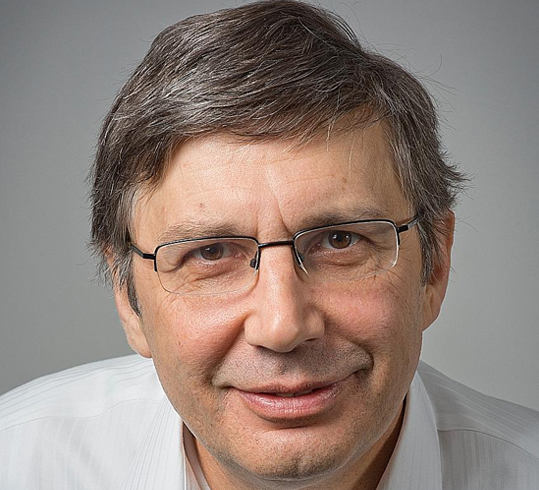
Dr. Andre Konstantin Geim
View More

Dr. Andre Konstantin Geim
Professor, University of Manchester, UK, Nobel Prize winner (2010)
Dr. Andre Geim, in full Sir Andre Konstantin Geim, is a Russian physicist who was awarded the 2010 Nobel Prize for Physics for his experiments with graphene. He shared the prize with his colleague and former student Konstantin Novoselov. Geim held dual citizenship in the Netherlands and Great Britain.
Geim received a master’s degree from the Moscow Physical-Technical Institute (now the Moscow Institute of Physics and Technology) in 1982 and a doctoral degree from the Institute of Solid State Physics at Chernogolovka, near Moscow, in 1987. He was a research scientist at the Institute for Microelectronics Technology and High Purity Materials at Chernogolovka from 1987 to 1990, and between 1990 and 1994 he held postdoctoral positions at the University of Bath, the University of Nottingham, and the University of Copenhagen. He was an associate professor of physics at Radboud University Nijmegen in the Netherlands from 1994 to 2000. In 2001 he became a professor of physics at the University of Manchester.
In 2004 Geim, Novoselov, and colleagues succeeded in isolating graphene, a one-atom-thick sheet of carbon found in a hexagonal lattice. Graphene is an extremely good conductor of electricity and may surpass silicon to form the next generation of computer chips. Graphene is also almost totally transparent, so it could be an ideal material for touch screens and solar cells.
During his career, Andre Geim has published many research papers, of which more than 20 are cited over 1,000 times and 4 are cited over 10,000 times. Two of the latter are now on the list of the 100 most cited research papers in human history. Thomson-Reuters has repeatedly named him among the world’s most active scientists and attributes to him the initiation of three new research fronts – diamagnetic levitation, gecko tape and graphene.
Andre was also awarded the IgNobel prize in 2000 for his work on levitating frogs, becoming the only recipient of both Nobel and IgNobel Prizes. He has received both Dutch and British knighthoods.
Title: 2D Empty Space and its Unusual Properties
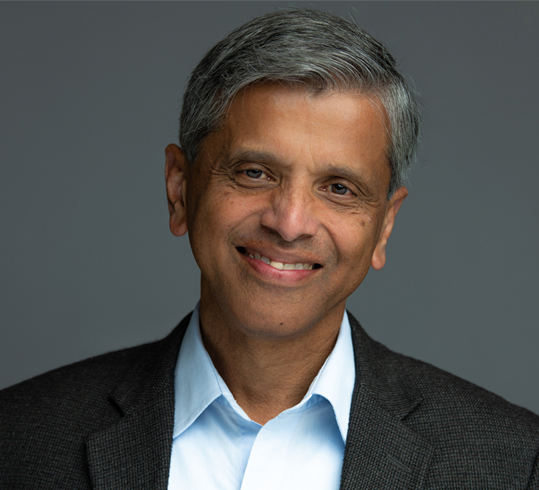
Dr. Prashant V. Kamat
View More

Dr. Prashant V. Kamat
Professor, University of Notre Dame, USA and Editor-in-Chief of ACS Energy Letters
Prashant V. Kamat is a Rev. John A. Zahm, C.S.C., Professor of Science in the Department of Chemistry and Biochemistry and Radiation Laboratory and Concurrent Professor in the Department of Chemical and Biomolecular Engineering. A native of Binaga, India, he earned the masters (1974) and doctoral degree (1979) in Physical Chemistry from the Bombay University, and carried out his postdoctoral research at Boston University (1979-1981) and University of Texas at Austin (1981-1983). He joined Notre Dame in 1983. Professor Kamat has for nearly three decades worked to build bridges between physical chemistry and material science by developing advanced nanomaterials for cleaner and more efficient light energy conversion. Professor Kamat’s research has made significant contributions to four areas: (1) Photoinduced catalytic processes using semiconductor and metal nanoparticles, nanostructures and nanocomposites, (2) Development of light energy harvesting assemblies (e.g., quantum dots, metal halide perovskites and inorganic-organic hybrid assemblies) for next generation solar cells, (3) Utilization of carbon nanostructures (SWCNT and graphene) as conducting scaffolds to collect and transport charge carriers in solar cells and fuel cells, and (4) Environmental remediation using advanced oxidation processes and chemical sensors.. He has directed DOE funded solar photochemistry research for the past 20 years. In addition to large multidisciplinary interdepartmental and research center programs, he has actively worked with industry-sponsored research. He has served on many national panels on nanotechnology and energy conversion processes. He has published more than 450 scientific papers that have been well received by the scientific community (52000+ citations). and has an h-index of 121. Science Watch of ISI included him among the Top 100 chemists of the decade 2000-2010 and included among Most Cited Chemists in 2014, 2015, 2016. In 2016, Kamat was named by the American Chemical Society as the Editor-in-Chief of new journal, ACS Energy Letters. Earlier, he served as a deputy editor of the Journal of Physical Chemistry Letters from 2010-2016. He is a member of the advisory board of scientific journals, Chemical Reviews, Proceedings of the Indian National Academy, J. Colloid & Interface Science, Research on Chemical Intermediates, Applied Electrochemistry and Interface. He was awarded Honda-Fujishima Lectureship award by the Japanese Photochemical Society in 2006, CRSI medal by the Chemical Research Society of India in 2011, and Langmuir Lectureship award in . He is a Fellow of the Electrochemical Society, AAAS, and the American Chemical Society (ACS). He was elected as a Pravasi Fellow of the Indian NationalScience Academy in 2015.
Title:Semiconductor Nanostructures for Next Generation
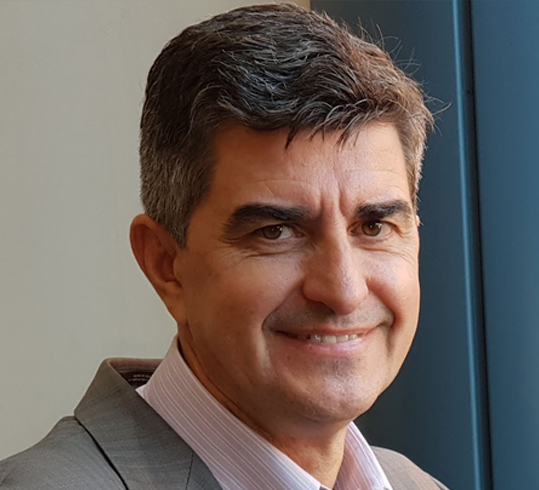
Dr. Yury Gogotsi
View More
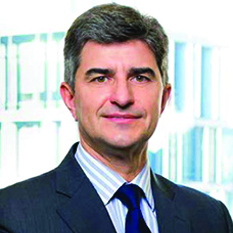
Dr. Yury Gogotsi
Drexel University, USA
Dr. Yury Gogotsi works on synthesis and surface modification of inorganic nanomaterials, such as nanodiamond, carbide-derived carbons, nanotubes, and two-dimensional carbides and nitrides (mxenes). His group also explores energy related and other applications of materials discovered and developed in gogotsi lab. He works on carbon and carbide nanomaterials with tunable structure and porosity had a major impact on the field of capacitive energy storage. His areas of study are materials science and engineering and nanomaterials

Dr. Andrew Wee
View More

Dr. Andrew Wee
Professor, NUS, Singapore and Associate Editor - ACS Nano
Professor Andrew Wee is Vice President (University and Global Relations) at the National University of Singapore. Prof Wee, who was Dean of the NUS Faculty of Science from April 2007 to March 2014, is President of the Singapore National Academy of Science. He is also the Director of the Surface Science Laboratory in the Department of Physics at the NUS Faculty of Science, and an adjunct scientist at the Agency of Science, Technology and Research’s Institute of Materials Research and Engineering.A Professor of Physics, Prof Wee was awarded the President’s medal in 2008 by the Institute of Physics, Singapore, as well as a UK-Singapore Partners in Science Collaboration Award in 2006 as a visiting scientist to Imperial College. Prof Wee’s research interests are in surface and nanoscale science, scanning tunneling microscopy and synchrotron radiation studies of the molecule-substrate interface, graphene and related nanomaterials. A fellow of the Institute of Physics, UK, the Singapore National Academy of Science, as well as the Institute of Physics, Singapore, he has published more than 400 internationally refereed scientific papers. He is an Associate Editor of the journal ACS Nano since 2011, and serves or has served on several journal editorial boards including Applied Physics Letters-Journal of Applied Physics (2009-2011), Surface and Interface Analysis (2005-) and Surface Review and Letters (2002-). He holds a Bachelor of Arts (Honours) in Physics as well as a Masters degree from the University of Cambridge. He received his DPhil from the University of Oxford.
Title: Ferromagnetic 2D Materials
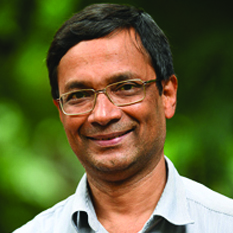
Dr. Dipankar Das Sarma
View More

Dr. Dipankar Das Sarma
Professor, Indian Institute of Science, India and Senior Editor of ACS Energy Letters
Dipankar Das Sarma, popularly known as D.D. Sarma, is an Indian scientist and structural chemist, known for his researches in the fields of Solid State Chemistry, Spectroscopy, Condensed Matter Physics, Materials Science, and Nanoscience. He is a former MLS Chair Professor of Physics and Chairman of the Centre for Advanced Materials and the GAST Professor of Uppsala University, Sweden, A recipient of TWAS Physics Prize and the UNESCO Biennial Javed Husain Prize, Sarma was honored by the Council for Scientific and Industrial Research (CSIR), Government of India, in 1994, with the Shanti Swarup Bhatnagar Prize for Science and Technology. He enrolled for research at the Indian Institute of Science, (IISc) Bengaluru from where he secured his PhD in 1982 under the tutelage of renowned solid state chemist, C. N. R. Rao. He remains a professor and the Chairman of the Solid State and Structural Chemistry Unit at the institution. Presently, he is J.N. Tata Chair Professor at the Solid State and Structural Chemistry Unit of the Indian Institute of Science. Besides heading the Solid State and Structural Chemistry Unit, he served as a guest professor at the Uppsala University, Sweden, a Distinguished Scientist at the CSIR-Network Institutes of Solar Energy, an honorary professor at the Jawaharlal Nehru Centre for Advanced Scientific Research, Bengaluru and a distinguished visiting professor at the Indian Association for the Cultivation of Science, Kolkata. He has also been an adjunct professor at the Tata Institute of Fundamental Research, Prof. Sarma is a Senior Editor of ACS Energy Letters and a member of the editorial boards of several peer reviewed journals such as J. Electron Spectroscopy and Related Phenomena, Solid State Communication, Indian Journal of Physics, and Surface and Interface Analysis. He has also been associated with Advances in Physical Chemistry, Pramana – Journal of Physics, Journal of Physical Chemistry, The Open Condensed Matter Physics Journal and Research Letters in Physical Chemistry, as an editorial board member.
Title: Nature and origin of the metastable state in chemically exfoliated few-layer MoS2
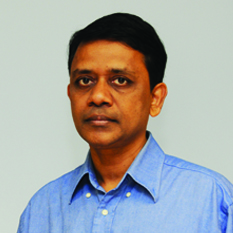
Dr. Manoj Gupta
View More

Dr. Manoj Gupta
NUS, Singapore
Dr Manoj Gupta was a former Head of Materials Division of the Mechanical Engineering Department and Director designate of Materials Science and Engineering Initiative at NUS, Singapore. He did his Ph.D. from University of California, Irvine, USA (1992), and postdoctoral research at University of Alberta, Canada (1992). In August 2017 he was highlighted among Top 1% Scientist of the World Position by The Universal Scientific Education and Research Network and among 2.5% among scientists as per ResearchGate. To his credit are: (i) Disintegrated Melt Deposition technique and (ii) Hybrid Microwave Sintering technique, an energy efficient solid‐state processing method to synthesize alloys/micro/nanocomposites. He has published over 500 peer reviewed journal papers and owns two US patents. His current h‐index is 59, RG index is 46 and citations are greater than 22500. He has also co‐authored six books, published by John Wiley, Springer and MRF ‐ USA. He is Editor‐in‐chief/Editor of twelve international peer reviewed journals. In 2018 he was announced World Academy Championship Winner in the area of Biomedical Sciences by International Agency for Standards and Ratings. A multiple award winner, he actively collaborate/visit Japan, France, Saudi Arabia, Qatar, China, USA and India.
Title: Magnesium Based Nanocomposites in Biomedical Applications

Dr. Sebastian Lourdudoss
View More

Dr. Sebastian Lourdudoss
KTH-Royal Institute of Technology, Sweden
Sebastian Lourdudoss obtained M.Sc. in chemistry from (St. Joseph’s College, Trichy) Madras University, India, in 1976 and Ph.D. in chemistry from Faculté Libre des Sciences de Lille, France, in 1979. In 1980 he joined KTH, Stockholm, Sweden, to work on chemical absorption heat pumps and thermochemical energy storage. He changed his field of interest to semiconductors in 1985 when he had moved to Swedish Institute of Microelectronics, where he started to develop epitaxy of III-V compound semiconductors for fabricating optoelectronic devices. In 1993 he moved back to KTH where he is currently a professor in Semiconductor Materials. He has contributed to the development of semi-insulating III-V materials including III-nitrides for discrete and/or integrated device fabrication and buried heterostructure lasers for high-speed data- and telecom applications. His current interests are the integration of III-Vs on silicon, high power buried heterostructure quantum cascade lasers and semiconductors for non-linear applications.
Prof. Lourdudoss was a laureate of Fondation de France, Paris in 1978, a team member that won “gold foot” from Nyteknik magazine for the breakthrough in Information Technology in 1999 and a winning team member of an innovation program Vinn nu from Vinnova (Sweden’s Innovation Agency) in 2013. He was the recipient of IPRM (Indium Phosphide and Related Materials) award in 2017. He was Sir C.V. Raman visiting professorship lecturer at the University of Madras in 2018. He is also acting as an overseas professor at Anna University, Chennai, India. Prof. Lourdudoss is a member of SPIE and a senior member of IEEE.
Title: Advanced Photonic Devices Enabled by Hydride Vapour Phase Epitaxy

Dr. Aaron Marshall
View More

Dr. Aaron Marshall
MacDiarmid Institute for Advanced Materials and Nanotechnology, University of Canterbury, New Zealand
Professor Marshall’s research interests and expertise are based around electrochemical energy engineering. This includes activities on electrocatalytic CO2 reduction, redox batteries, fuel cells, and hydrogen from water electrolysis. The majority of his work focuses on electrocatalysis, particularly understanding the structural and electronic factors behind electrocatalytic activity. This involves the synthesis of electrocatalytic materials, detailed physicochemical characterisation and the use of sophisticated electrochemical techniques to characterise the electrocatalytic activity of the materials. Ultimately, his goal is to develop better electrocatalysts by using fundamental understanding of what makes electrocatalysts more active rather than the more traditional “trial and error” approach. This is a major goal of fundamental energy research (Whitesides & Crabtree, Science, 2007, 315, p796). Since joining UC in 2009, A/Professor Marshall has established the most well equipped electrochemistry laboratory in NZ and leads a large research group in the area of electrocatalysis (currently supervising 7 PhD, 4 ME and 3 Hons students). This work has attached over $5M of funding over the last few years. In addition to his fundamental research on electrocatalysis, he is also working to commercialise his research on flow batteries and have recently started a company to develop technology to recover metals from industrial wastes.
Title: Electrocatalytic conversion of CO2 to fuels
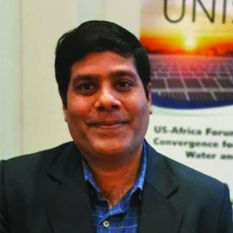
Dr. Ajay Kumar Mishra
View More

Dr. Ajay Kumar Mishra
University of South Africa
Prof. Ajay Kumar Mishra is currently working as Professor at Nanotechnology and Water Sustainability Unit, College of Science, Engineering and Technology, University of South Africa, Florida Science Campus, Johannesburg, South Africa. Prof Mishra recently recognised as “Fellow member” and “Chartered Scientist” by Royal Society of Chemistry, UK. He is also working as “Adjunct Professor” at Jiangsu University, China. Prof. Mishra has pursued PhD in Chemistry from Department of Chemistry, University of Delhi, Delhi, India. In 2006, he moved to the University of Free State, South Africa for Postdoctoral studies in the area of composites/nanocomposites. Later in 2009 Prof. Mishra has joined Department of Applied Chemistry as Senior Lecturer where he was promoted to Associate Professor in 2011. Prof. Mishra is currently group leader of the research area for the composites/nanocomposites, water research and bio-inorganic chemistry. He has hosted several visiting researchers/scientists/postdocs in his group. Prof. Mishra has also developed a number of collaborations worldwide. His research contribution includes more than 290 publications in international journals and h-index of 33. He has delivered a number of including Plenary/Keynote/Invited Lectures. For his outstanding research profile, he was awarded a number of awards. Prof. Mishra also served as Associate Editor as well as member of the editorial board of many international journals. He has edited several books by the renowned publishers. He has been reviewing a number of international journals and member of a number of scientific societies.
Title: Smart composite materials for environmental sustainability
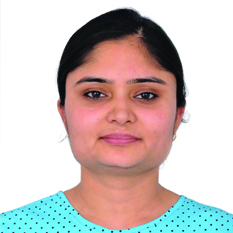
Dr. Ankita Katre
View More

Dr. Ankita Katre
DST-INSPIRE Faculty, Savitribai Phule Pune University, India
Dr. Ankita Katre is a DST-INSPIRE faculty at Centre for Modeling and Simulation (CMS), University of Pune, Pune, India. Prior to this, she was working as a Postdoctoral Research Associate with Prof. Natalio Mingo in CEA-Grenoble, France. She completed her PhD in 2015 with prestigious Max Planck Fellowship under the guidance of Prof. Georg Madsen and Prof. Ralf Drautz in ICAMS, Bochum and Max Planck Institute, Düsseldorf. Her research interests revolve around the computational study of transport properties in technologically interesting materials. She is involved in the method development to calculate effect of different defects on thermal conductivity of materials (as a part of almaBTE code https://almabte.bitbucket.io). Furthermore, she has also worked on development of interatomic potentials for large scale simulations of materials properties. She has several publications in well-known Physics and Materials Science Journals with an h-index of 11. She is also a peer reviewer for several renowned journals such as Science, Physical Review Letters, Physical Review B, Journal of Materials Chemistry A (https://ankitamkatre.wixsite.com/my-research).
Title: Ab initio modelling of the role of defects in thermal transport
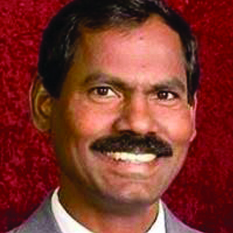
Dr. Arunachala Mada Kannan
View More

Dr. Arunachala Mada Kannan
Professor, Arizona State University, USA and Associate Editor, International journal of Hydrogen Energy
A.M. Kannan is a Professor in the Polytechnic School of the Ira A. Fulton Schools of Engineering at Arizona State University, USA, specializing in low temperature fuel cells, solar cells, and large-scale energy storage in batteries. He was Visiting Professor at Tampere University of Technology, Finland, Principal Scientist at the VTT Technical Research Center of Finland, and Distinguished Visiting Professor at Yuan Ze University, Taiwan and a “Distinguished Chair” awardee through Fulbright Fellowship at the Aalto University, Finland. He possesses strong academic and professional experience, having also worked as Chief Scientist at Hoku Scientific Inc., Hawaii. Dr. Kannan has published extensively and presents regularly at international conferences on batteries and fuel cells. He serves as an Associate Editor of the International Journal of Hydrogen Energy, as well as on other editorial boards. He earned his M.S. in Chemistry from Madurai Kamaraj University, India, in 1985, and completed his Ph.D. in 1990 at the Indian Institute of Science, India.
Title: Solid Electrolyte for Li-Ion Batteries
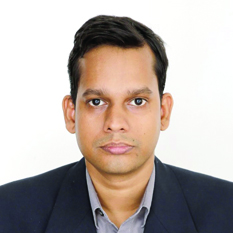
Dr. Bablu Mukherjee
View More

Dr. Bablu Mukherjee
National Institute of Materials Science, Tsukuba, Ibaraki, Japan
Dr. Bablu Mukherjee is currently working as research fellow at International Center for Materials Nanoarchitectonics (WPI-MANA) of National Institute for Materials Science (NIMS). He graduated with a B.Sc. (Physics) from University of Calcutta in 2007 and obtained master degree (M.Sc., Physics) from the Indian Institute of Technology (IIT) Madras in 2009. He received his Ph.D. degree from the National University of Singapore (NUS) in 2013. He was a JSPS fellow (2017) at NIMS, DAAD fellow (2009) at Gottfried Wilhelm Leibniz University of Hanover, Research Assistant at Electrical & Computer Engineering of NUS (2014), Post-doctoral Scientist at the George Washington University (2015), Institute Post-doctoral fellow at IIT Bombay (2017) and Assistant Professor in Physics, SAS at VIT University, Vellore (2017). His research interests are in the areas of nanofabrication, photodetectors, non-volatile memory, nanosensors and 2D layered material based optoelectronic devices.
Title: 2D Materials and VanderWaals Heterostructure based Optoelectronic Devices
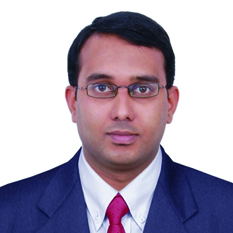
Mr. Ershad Abubacker
View More

Mr. Ershad Abubacker
Royal Chemistry India Pvt. Ltd., India
Title: Royal Society of Chemistry: Supporting Chemical Sciences in India
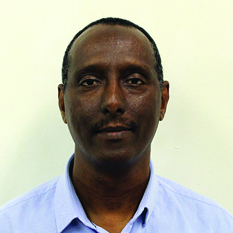
Dr. Genene Tessema Mola
View More

Dr. Genene Tessema Mola
University of KwaZulu-Natal, South Africa
Dr. Genene Tessema Mola is currently Associate professor at the University of KwaZulu-Natal, South Africa. He obtained his Ph.D degree from the University of Bonn. Professor Mola has been dealing with research in the field of Semiconductor and Device Physics for nearly 16 years. He has wide range of experiences in materials including silicon and germanium as well as organic semiconductors. Professor Mola has taught physics at various levels of university education and has supervised about 20 postgraduate students. He is currently pursuing research in organic electronics and functional materials. He has published more than 110 publications with h -index of 25.
Title: Flexible electronic device for energy
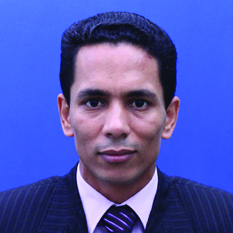
Dr. Gomaa A. M. Ali
View More

Dr. Gomaa A. M. Ali
UAl-Azhar University, Assiut,, Egypt
Dr. Gomaa A. M. Ali is an assistant professor at Chemistry Department, Faculty of Science, Al-Azhar University, Assiut, Egypt. He has 12 years of experience working in research area of Materials Science, Nanocomposites, Humidity Sensing, Graphene, Supercapacitors, Water Treatment and Drug Delivery. He obtained his B.Sc. (2006) and M.Sc. (2012) in Physical Chemistry from Al-Azhar University, Egypt. He was awarded his Ph.D. (2015) in Advanced Nanomaterials for Energy Storage from UMP, Malaysia. He is the recipient of some national and international prizes and awards. Dr. Gomaa has published over 82 journal articles, as well as 5 book chapters on a broad range of cross‐disciplinary research fields including advanced multifunctional materials, nanotechnology, supercapacitor, water treatment, humidity sensing, biosensing, corrosion, drug delivery, and materials for energy applications. Dr. Gomaa has served as both a Senior Editor and board member of many international journals, as well as a reviewer for more than 30 WoS journals. To date, Dr. Gomaa’s published articles have accumulated total (Google Scholar) citations of 1216 with h-index of 20 (citations from Scopus of 831 with 18 h-index) http://orcid.org/0000-0002-7152-531X
Title: Nanomaterials for energy storage (Supercapacitor) applications
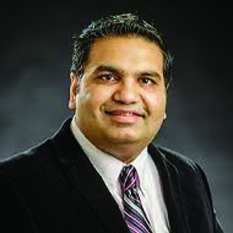
Dr. Hitesh Vora
View More

Dr. Hitesh Vora
Okhalama University, USA
Dr. Hitesh Vora presently the Assistant Professor & Director, Industrial Assessment Center (IAC) at Oklahoma State University. He obtained his Ph.D in Materials Science & Engineering and M.S in Mechanical Engineering Technology, University of North Texas, Denton, TX, USA, Dec 2013. His research area includes Advanced (smart/cyber) manufacturing and Energy management to improve energy efficiency (reduced energy, cost, throughput) for small to medium-sized manufacturers and Additive and subtractive manufacturing and characterization of advanced high-performance materials with emphasis on establishing processing-structure-property relationship. He has published 44 research papers with total citations: 518, h-index: 15.
Title: 3D Printed PLA-Stainless Steel Polymeric Composite for Biomedical Applications: A Novel Cost-effective Design of Experiments Methodologies
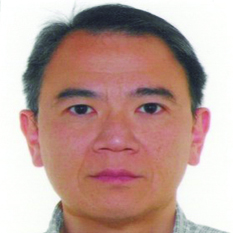
Dr. Hoe Tan
View More

Dr. Hoe Tan
Department of Electronic Materials Engineering, Australian National University, Australia
Prof. Tan received his B.E. (Hons) in Electrical Engineering from the University of Melbourne in 1992 and PhD in Materials Engineering from the Australian National University in 1997. He has been the past recipient of the Australian Research Council Postdoctoral, QEII and Future Fellowships. He has published/co-published over 450 journal papers and 6 book chapters. He is also a co-inventor in 4 US patents related to laser diodes and infrared photodetectors. His research interests include epitaxial growth of low-dimensional compound semiconductors, nanostructured optoelectronic devices and ion-implantation processing of compound semiconductors for optoelectronic device applications. Prof. Tan is a Fellow of the IEEE and was the Distinguished Lecturer for IEEE Nanotechnology Council (2016 & 2017) and IEEE Photonics Society (2016-2017). He also holds adjunct appointments at Hefei University of Technology and Nanjing University.
Title: Semiconductor Nanostructures for Optoelectronics and Energy Applications
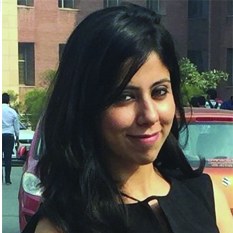
Ms. Jagrithi Sethi
View More

Ms. Jagrithi Sethi
Plymouth University, United Kingdom
Ms. Jagrithi Sethi is a Marie curie research fellow at Plymouth University the United Kingdom. She completed M.Tech Nanotechnology From Amity University, Delhi.
Title: A dual-layer graphene and reduced graphene oxide based electrochemical biosensor for label-free detection of beta-amyloid biomarkers
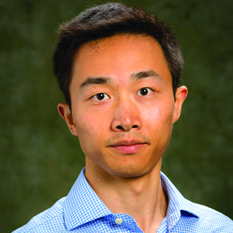
Dr. Jia Deng
View More

Dr. Jia Deng
Binghamton University – State University of New York, USA
Jia Deng joined the department of Systems Science and Industrial Engineering at Binghamton University as an assistant professor in 2017. He earned a B.S. degree in 2010 from Wuhan University of Technology, Wuhan, China in the field of Process Equipment and Control Engineering. In 2013, he received a M.S. degree in Mechatronics Engineering from Huazhong University of Science and Technology, Wuhan, China. In 2017, He earned his Ph.D. in Industrial Engineering from North Carolina State University, Raleigh, North Carolina. His research interests include process innovations and applications of AFM-based nanomanufacturing and additive manufacturing in biomedical fields.
Title: Vibration and Heat Assisted Atomic Force Microscope Based Nanomachining
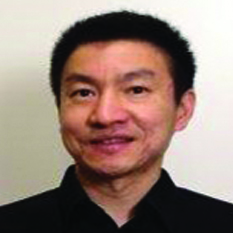
Dr. Jiefang Zhu
View More

Dr. Jiefang Zhu
Uppsala University, Sweden
Jiefang received his PhD in Applied Chemistry in July 2004 from East China University of Science and Technology.. After that he did post-doctoral research at Shanghai Institute of Ceramics, Chinese Academy of Sciences and Applied Physics Department, Chalmers University of Technology, Sweden. Since 2013, he has been working in the Department of Chemistry-Ångström, Uppsala University. His research is generally focused on nanomaterials, which includes the preparation, characterization and performance test. My main interest lies in studying the relationship between structure, morphology and properties of powder and film samples. These nanomaterials are supposed to be used as photoanodes, photocatalysts, catalysts and biomaterials. At present, I am involved at the following research projects: Nanostructured photoanodes for photoelectrochemical hydrogen production and organics degradation Electrodeposition of 1D semiconductors with highly photocatalytic and photoelectrochemical activity Synthesis and characterisation of catalysts Characterisation of porous carbon-polymer-catalyst composites
Title: Operando XRD used in the study of metal-oxygen batteries

Mr. Jonathan Bloor
View More

Mr. Jonathan Bloor
University of Plymouth, UK
Mr. Jonathan Bloor is an interdisciplinary scientist currently studying for a PhD in water filtration using biopolymer aerogels at the University of Plymouth in the UK. Previous studies included a Master's degree in Robotics, producing graphene based piezoelectric sensors using thin films. Using graphene oxide for filtration purposes became the greatest challenge, this took the work from two-dimensions into three-dimensional Aerogel structures that are biodegradable and biocompatible. Aerogels have controllable porosity and functional surfaces that can be modified to the requirements of the application. Jonathan has been awarded first prize for a poster at the 1st international Aerogel conference at Newcastle University in the UK and was also selected for a junior research exchange scholarship to collaborate with IISc in Bangalore, India funded by the Indo-UK water council.
Title: Aerogels for Water Filtration
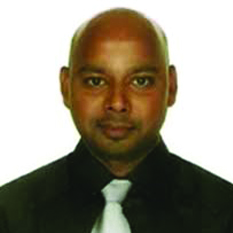
Dr. Mangalaraja Ramalinga Viswanathan
View More

Dr. Mangalaraja Ramalinga Viswanathan
University of Concepcion, Chile
Mangalaraja Ramalinga Viswanathan is a Full Professor in the Department of Materials Engineering, University of Concepción at Concepcion, Chile.
He worked as the Director of International Relations at the University of Concepción for the years 2018 and 2019. He served as the Director of the Department of Materials Engineering at University of Concepcion for six years from 2010 to 2016. He also served as the President of the Chilean Metallurgy and Materials Society (SOCHIMM) for the period from 2015 to 2017. He is the Life-Member of Indian Ceramic Society (ICS) and Fellow of Indian Institute of Ceramics (IIC). Also, he was a member of The Mineral, Metals and Materials Society (TMS) and Singapore Materials Research Society (MRS-S) during 2017-2018; and was a member of American (ACerS) and Japanese (CerSJ) Ceramic Societies during 2010-2012.
Mangalaraja earned his B.Sc. degree in Physics from Madurai Kamaraj University and, received his M.Sc. degree in Materials Science, M.Tech. in Ceramic Technology and Ph.D. in Technology from Anna University-Chennai, India. He has postdoctoral experiences from AIST-Nagoya, Japan, Lulea University of Technology-Lulea, Sweden and Anna University-Chennai, India. His primary research interests are focused in the areas of nanotechnology-driven advanced ceramics (functional ceramics for energy and environmental applications) and micro-nano-structure-property relationship of functional and structural ceramics and metallic composite materials. He is the author or coauthor of over 190 refereed international journal publications, 12 book chapters, three patents, one of the Editors in a Book, and more than 150 research presentations in several International Conferences. Further, he has participated as Responsible and Co-Investigator of 35 research projects funded by ANID-National Agency for Research Development (formerly CONICYT - National Commission of Scientific and Technological Research), Government of Chile. He had been acted as a member in the expert committee of FONDECYT-ANID for two times (four years) the area of Materials Science and Engineering, and now extending his expertise as a Reviewer of various projects in the area of Materials Science and Engineering.
Title: Nanostructured Materials: Potential Applications to Energy and Environment
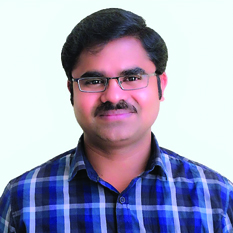
Dr. Murali Banavoth
View More

Dr. Murali Banavoth
University of Hyderabad, India
Dr. Murali Banavoth is currently an Assistant Professor at School of Chemistry, University of Hyderabad. After obtaining his Ph.D., from Indian Institute of Science, moved to King Abdullah University of Science and Technology (KAUST) at Solar Center as a postdoctoral associate and carried out pioneering work in the field of hybrid functional materials for solar harvesting. Dr. Banavoth’s contribution to the photovoltaic (Solar Cells) research is evident from his outstanding more than 50 publications in Nature, Advanced Materials, JACS, Angew. Chem., etc. are a few to name. His research interests are broadly classified as organic, inorganic, and hybrid solar cells and photovoltaics. Dr. Banavoth is the recipient of Telangana state-Parthibha Puraskar Award, Junior and Senior Research Fellowships from Council of Scientific and Industrial Research-New Delhi. He is also the recipient of several international and national awards such as Young Scientist Award from Indian Science Congress (ISCA), Young Scientist Award from International Society for Energy Environment and Sustainability (ISEES), Young Scientist Award from BRICS-2017, Young Scientist Award from Scientific Planet Society (SPS)-2018, Young Scientist Award from Telangana Academy of Sciences (TAS), Startup grant from University Grants Commission (UGC), Early Career Research Award (ECRA) from Department of Science and Technology (DST), NASi-Platinum Young Scientist Award etc for his remarkable contributions in the field of Solar Energy Research.
Title: Highly Efficient Bulk Heterojunction Solar Cells: Nanostructured Electron Transporting Layer and its Grain Alignment.
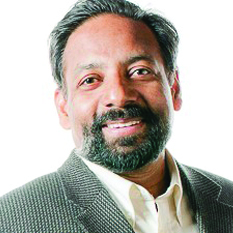
Dr. Muthu Packirisamy
View More

Dr. Muthu Packirisamy
Concordia University, Canada
Dr. M. Packirisamy, a strong promoter of innovation in Canada, is a Professor and Concordia Research Chair at Concordia University and the first Quebecor to become the Fellow of National Academy of Inventors (US). As an expert in the areas of Micro-Nano Technologies, he develops and studies nano integrated microsystems for various applications covering from cancer diagnosis to green energy harvesting to telecommunication. He is also an academician of Canada and having the honor of being the member of two societies out of three societies of Canadian Council of Academies (CCA), namely, Royal Society of Canada (RSC) and Canadian Academy of Engineering (CAE). As the Director of Micro-Nano-Bio Integration Center and Optical Bio Microsystems Lab, he developed this lab focusing on Lab on Chip, Bio-Microsystems and micro-nano integration. He is the recipient of Member Royal Society of Canada College, Fellow of National Academy of Inventors (US), Fellow Indian National Academy of Engineering, Fellow of Engineering Institute of Canada, Fellow of Canadian Academy of Engineering, Fellow of American Society of Mechanical Engineers, Fellow of Institution of Engineers India, Fellow of Canadian Society for Mechanical Engineering and I.W.Smith award from Canadian Society for Mechanical Engineering, Concordia University Research Fellow, Petro Canada Young Innovator Award and ENCS Young Research Achievement Award. As an author of around 450 articles published in journals and conference proceedings, 47invited talks, he has 27 inventions in the areas of micro and nano systems. He has supervised more than 16 Research Associates/PDF, 31 PhDs, 54 Masters and 71 UG students in addition to teaching around 3000 students. He was successful in obtaining grants worth of more than $15 Million, including Strategic Grant, Discovery Accelerator Award, Largest CFI New Opportunities Grant and many FRQNT Team and Commercialization grants. He has also published a textbook, BioMEMS: Engineering and Science Perspectives, and 5 book chapters. His Recent invention on energy harvesting from photosynthesis of blue green algae had more than 160 citations around the world and was covered by most of the countries and media throughout the world including Canadian Broadcasting Corporation (CBC), NDTV, Montreal Gazette, National Sciences and Engineering Research Council of Canada, Royal Society of Canada, International Business Times, Thomson Reuters, and many more. In addition to helping many start-up companies establish and incubate, he collaborates with many industries to commercialize his inventions, train many of students to create companies and create innovative mind-set among young engineers.
Title: Nanomaterials for Nanophotonics and Plasmonics
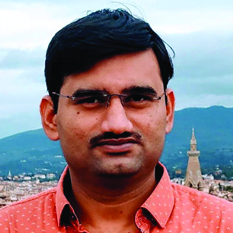
Dr. Nanasaheb D. Thorat
View More

Dr. Nanasaheb D. Thorat
Wroclaw University of Science and Technology, Poland
Dr Nanasaheb Thorat is a Marie Curie Fellow (IF) scientist working at the Department of Biomedical Engineering at the Wroclaw University of Science and Technology, Poland. He received his PhD in Physics with a Gold Medal from D Y Patil University, Kolhapur for his excellent contributions in research for the year 2013–2014. He has his previous research experience from Samsung Biomedical Research Institute, South Korea and University of Limerick, Ireland. He is the recipient of various prestigious fellowships including JSPS, IRC, SERB Overseas and Marie Curie. His research is based on the area of nanobiotechnology and theranostics especially for the cancer treatment. Dr Thorat is currently serving as a Management Committee member of the European Commission’s Horizon 2020 Cooperation in Science and Technology (COST) Programme. Dr Thorat is an active member of various scientific societies such as European Materials Research Society (EMRS), International Magnetic Society, European Nanomedicine Society and many others. Dr Thorat has published 45 peer reviewed journal research papers and articles, three books and six book chapters with an H index of 25. He supervised many student researchers and actively participated in outreach and scientific dissemination for the service of the wider community.
Title: Magnetic and Light active drug delivery and cancer therapeutics using a functional hybrid nanoplatforms
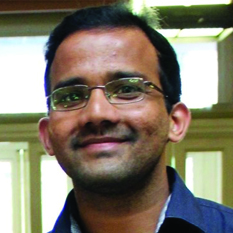
Dr. Narendra Kurra
View More

Dr. Narendra Kurra
Drexel University, USA
Dr. Narendra Kurra is currently working as a Research Assistant Professor at A. J. Drexel Nanomaterials Institute, Drexel University, USA. He obtained his PhD from JNCASR, Bangalore in 2013. He did masters from school of chemistry, University of Hyderabad (2006-08). His Research interests include nanomaterials for electrochemical energy storage applications including high rate On-chip Energy Storage and hybrid metal-ion capacitors.
Title: Pseudocapacitive MXenes Enable High Rate Energy Storage
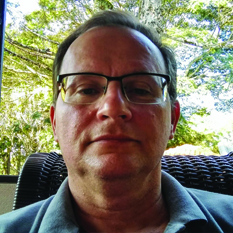
Dr. Paulo Cesar Piquini
View More

Dr. Paulo Cesar Piquini
Federal University of Santa Maria, Brazil
Paulo Cesar Piquini is currently Professor at the Department of Physics, Universidade Federal de Santa Maria. His research area includes Condensed Matter Physics, Solid State Physics and Molecular Physics. His work also focuses on Computer simulation allowing to perform virtual experiments, where some conditions inaccessible to the experimentalists can be pursued. Further, the properties of new materials can be easily studied, allowing cheap prospections of their features and feasibility. He has more than 1600 citations with h-index of 20.
Title: Photophysical and photochemical properties of selected tetrapyrrolic macrocycles.
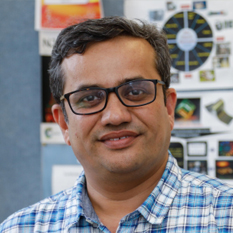
Dr. Prashant Sonar
View More

Dr. Prashant Sonar
Queensland University of Technology, Australia
Prashant Sonar carried out his doctoral work under the supervision of Professor Müllen at Max- Planck Institute of Polymer Research, Mainz, Germany and was awarded his PhD in 2004 from Johannes-Gutenberg University in Mainz. Dr. Sonar moved to Swiss Federal Institute of Technology (ETH), Zurich, Switzerland for doing his postdoctoral research as with Professor Schlüter from 2004 till 2006. From August 2006 till 2014, he was working as a Research Scientist at Institute of Materials Research and Engineering (IMRE), Agency of Science, Technology and Research (A*STAR), Singapore. Dr. Sonar received prestigious Future Fellowship (2013) from the Australian Research Council and was appointed as Associate Professor in July 2014 at Queensland University of Technology (QUT), Brisbane, Australia. At QUT, he established the Organic and Printed Electronic Research group. He was also appointed as Visiting Professor at School of Material Science and Engineering, Indian Institute of Technology, Kanpur from 29th November 2017 till 31st December 2017. He also holds adjunct Associate Professor position with Griffith University, Australia. Currently, he is serving as an Associate Editor of the journal Flexible and Printed Electronics (Institute of Physics, London) and recently elected as Fellow of Royal Chemical Society (FRSC).
Prof. Sonar is interested in design and synthesis of novel -functional materials (small molecules, oligomers, dendrimers, and polymers) for printed electronics, (OFETs, OLEDs, OPVs, OLETs, OPDs, and Sensors) bioelectronics and supramolecular electronic applications. Dr. Sonar delivered more than 36 invited and contributed talks at various international conferences and institutes. He has authored or co-authored 133 peer-reviewed research papers in international journals (H-index-38 according to Google Scholar with total citations 5500) and filed 11 patents and patent application in regional and international level. Recently his two patents licensed to the multinational US-based company.
Title: Organic Transistors: Conjugated Material Design and Evaluation
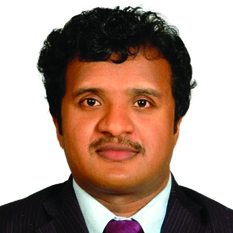
Dr. Pratap Kollu
View More

Dr. Pratap Kollu
University of Hyderabad, India
Dr. Pratap Kollu works as Assistant Professor with a demonstrated history of working in the higher education industry. Skilled in Magentic Sensors, Thin Films, Microfabrication, Materials Science, Spectroscopy, and Photolithography. Strong education professional with a PhD focused in Magnetic Sensors from Chungnam National University. His Research Areas includes, Magnetic sensors for health care, navigation and defense, Graphene – Magnetic nanocomposites for battery anode, Multiferroics, high frequency electronics and water purification materials and Piezoelectric materials and sensors. He has MEMBERSHIP in several prestigious organizations like Member of IEEE Magnetics society and Life Member of Magnetics society of India.
Title: Recent advances in flexible magnetic sensors and their applications
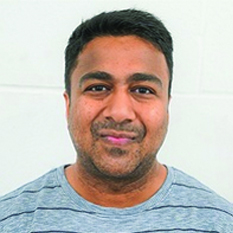
Dr. Sagar M. Jain
View More

Dr. Sagar M. Jain
Cranfield University, UK
Recently, Dr. Sagar M. Jain accepted the Associate Professor position at Cranfield University and will be leading and developing Photovoltaics and Optoelectronic research group at Cranfield. Presently, Sagar is a Senior Research Fellow at London South Bank University (LSBU), UK. Working on the Indo-UK SUNRISE project to deliver electricity to rural Indian villages through Photovoltaics. Sagar carried out his Ph.D. studies in the University of Torino, Italy. Before joining London South Bank University and Imperial College London. Before joining LSBU Sagar was a Marie-Curie COFUND fellow (with Prof. James R. Durrant) and Wallenberg foundation-funded fellow (with Prof. Gerrit Boschloo and Prof. Anders Hagfledt) at Swansea University, UK and Uppsala University, Sweden respectively. Working in the solar cell field since the last 12+ years, Sagar focuses on different spectroscopic as well as photovoltage characterization techniques to understand structure-property-performance-stability relation in 3rd generation photovoltaics. One of the several domains of his research involves a fundamental investigation to minimize the toxicity and scale-up of different types of Perovskite as well as Tandem solar cells. Sagar secured many prestigious fellowships – including recent Experienced researcher Marie-Curie award (2016-2019); Ministry of Education, University and Research (MUIR) fellowship (2007-2011), Italy and Baden-Württemberg fellowship (2012-2014), Germany and prestigious Wallenberg foundation scholarship (2014-2016) to work at Uppsala university, Sweden on 3rd generation solar cells. Sagar Published 38 research articles, 2 patents and 2 book chapters. Research is published in prestigious, high impact journals including Nature family – communication chemistry, Energy Environmental science (IF=33.8) ; Advanced Materials (IF=21.9), Advanced energy materials (IF=21.8), ACS Nano (IF=13.7), Nano Energy (IF=13) and Journal of Material Chemistry A (IF=9.1) etc For more information about Sagar’s research activities please visit http://www.swansea.ac.uk/staff/engineering/s.m.jain/ https://scholar.google.com/citations?user=73JSLdcAAAAJ&hl=en
Title: The emergence and future of perovskite solar cells, Interface engineering and non-toxic aspect
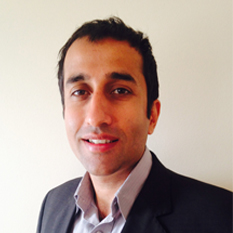
Dr. Samrat S. Kumar
View More

Dr. Samrat S. Kumar
Country Representative, Euraxess India.
Dr. Samrat S. Kumar is the Country Representative of EURAXESS India, an initiative of European Commission that supports the mobility and career development of researchers of all nationalities, age and career levels, while enhancing scientific collaboration between Europe and the world. Dr. Kumar holds a PhD in South Asia studies from the University of Oslo, Norway. Over the last 12 years Dr. Kumar been coordinating number of collaborative research and educational projects between European and Indian institutions.
Title: Research and Funding Opportunities under the EU's Horizon 2020 Programme
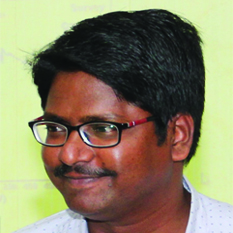
Dr. S. Angappane
View More

Dr. S. Angappane
Centre for Nano and Soft Matter Sciences(CeNS) Bangalore, India.
Dr. S. Angappane is working as a Scientist E at Centre for Nano and Soft Matter Sciences (CeNS), Bengaluru. His research group actively works on various semiconductor oxides nanomaterials for sensors, information data storage, electronic and solar cells applications. He has received research funding from various agencies. He has published over 50 peer-reviewed papers in international journals including JACS, PRB, APL, JAP, etc., He earned his PhD from Indian Institute of Technology Madras (IITM) and availed Postdoctoral Fellowship in Nano Science and Technology Initiative 2004 to work at JNCASR. He later moved to Sungkyunkwan University, South Korea to work on Nanomagnetic materials before joining at CeNS.
Title: Ultrafast Humidity Sensor made of TiO2 Nanorods
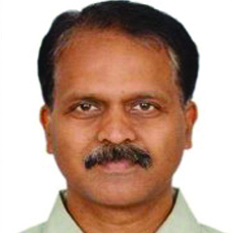
Dr. Siddhartha Panda
View More

Dr. Siddhartha Panda
Director, National Centre for Flexible Electronics, IIT Kanpur, India
Dr. Siddhartha Panda is currently the director and Professor at the National Centre for Flexible Electronics, IIT Kanpur, IIT Kanpur. His research focuses on chemical sensors and the accompanying transport, reactions and materials processing, utilizing silicon and flexible printable platforms. Prior to joining IIT Kanpur, he was a Staff/Advisory Engineer at the IBM Semiconductor R&D Center, New York, for over six years. He obtained a Ph.D from the University of Houston in 1999, an M.S. from the University of Cincinnati in 1995 and a B.Tech. from IIT Kharagpur in 1992, all in Chemical Engineering. He has about 60 publications, and 33 patents to his credit. He was awarded IBM Invention Achievement Award (2002-2006) and Jeet Bindra Research Fellowship (2010-2013). He is member of American Institute of Chemical Engineers (AIChE), Semiconductor Society of India (SSI) and Society for Information (SID)
Title: Enhanced Performance in Ion Selective Field Effect Transistors
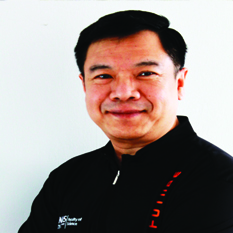
Dr. Sow Chorng-Haur
View More

Dr. Sow Chorng-Haur
NUS, Singapore
CH Sow received the B.Sc. degree (1st Hon) in Physics from the National University of Singapore (NUS) in 1991. After spending two more years in NUS, he received the M.Sc. degree in Physics from NUS. He went on to The University of Chicago and completed his PhD degree in 1998. During the period in 1999-2000, he worked as a Postdoctoral Fellow at Bell Laboratory, Lucent Technologies. He returned to NUS in year 2001. He is now a Professor with the Department of Physics. He has authored and co-authored more than 200 papers in the field of nanoscience and nanomaterials.
Title: The Little Laser That Could: Focused Laser Beam as a useful Tool for Nanomaterials Research
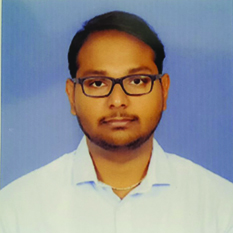
Dr. Sri Saran Venkatachalam
View More

Dr. Sri Saran Venkatachalam
University of Lille, France
Dr Sri Saran Venkatachalam earned his Bachelor’s degree in Applied Science and Master’s degree in Materials Science from PSG College of Technology, India. Dr. Sri has a PhD in ‘Micro and Nanotechnologies, Acoustics and Telecommunications” from the Institute of Electronics, Microelectronics, and Nanotechnology (IEMN), a French national research (CNRS) institute associated with University of Lille, France. He has gained research experience in electronic materials, micro-fabrication and device characterization at Europe’s leading research laboratories namely interuniversity microelectronics centre (IMEC), Belgium and IEMN, France. He is also experienced in Thermogravimetric analysis coupled with mass spectrometry, spectroscopic techniques such as mico-Raman, infrared and Thin film deposition. Currently, he continues to work as postdoctoral researcher at IEMN.
Title: Towards bridging the Terahertz Gap using Carbon-based Materials
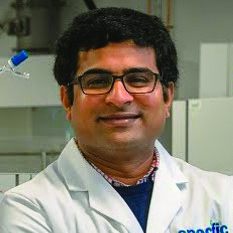
Dr. Sudhagar Pitchaimuthu
View More

Dr. Sudhagar Pitchaimuthu
College of Engineering, Swansea University, UK
Dr. Sudhagar Pitchaimuthu is Ser Cymru-II Rising Start Fellow at SPECIFIC, College of Engineering, Swansea University (SU). He is leading "Multifunctional Photocatalyst and Coating" research group at SU. His research expertise is ‘nanomaterial synthesis and coatings’ towards constructing low-cost solar energy-driven photoelectrochemical system/devices. Mainly his group focuses on utilising the abundance, sustainable solar energy for multifunctional applications such as energy conversion devices (solar cells and solar fuel cells), environmental clean-up (photocatalytic water treatment, air purification) and biosensors. His current research interest is to develop a) semiconductor thin film-based solar light photo absorbers (metal oxide, metal chalcogenides), b) Quantum dot films/coating, c) less expensive Pt-free water oxidation/reduction catalyst. His research is jointly funded by the Welsh Government and European Commission through the European Regional Development Fund (ERDF) under Sêr Cymru II-Rising Star Fellowship scheme (£ 1 M) over five years (2017-2022). Dr. Sudhagar graduated from Physics discipline, Bharathiar University, India in 2009. He was working as Research Assistant Professor during 2009-2013 under Prof. Yong Soo Kang at Center for Next Generation Dye-sensitized Solar Cells in Hanyang University, South Korea. Concurrently, he has been serving as visiting scientist to the Department of Applied Physics, University of Jaume I, Spain from 2011. He was a recipient of JSPS award from Japan Society for the Promotion of Science, Japan in 2013. Dr. Sudhagar has published more than 70 articles in peer-reviewed journals (citations: 1904, h index: 27), and contributed 5 book chapters. He has also chaired and co-organised 5 international conferences and workshops.
Title: Solar-to-Hydrogen- Opportunities and Challenges
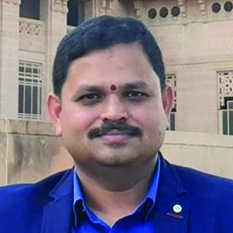
Dr. Suryanarayana J
View More

Dr. Suryanarayana J
Indian Institute of Technology Hyderabad, India
Dr. J. Suryanarayana is working as an Associate Professor at the Department of Physics, Indian Institute of Technology Hyderabad (IITH). His current research interests include understanding physics behind various nanoscopic and mesoscopic magnetic materials, a realization of their usage in practical devices such as spin-electronics and optoelectronics. He has published his research in nearly 50 international journals and delivered several presentations at various reputed institutes in India and abroad. He was a visiting scientist at Karlsruhe Institute of Technology, Germany through IIT–DAAD Faculty exchange program in 2014 and 2018. He earned his M.Sc from University of Hyderabad and PhD from Indian Institute of Technology Madras. He pursued his Postdoctoral research on magnetostriction, magnetocaloric, nanomagnetism, spintronics, etc., domains at Tata Institute of Fundamental Research, Mumbai, National University of Singapore and Katholic University of Leuven, Belgium, before joining at IITH. He was a recipient of Prof. A. L. Laskar award for best PhD thesis at IITM. He is a life member of the Magnetics Society of India and Electron Microscopy of India.
Title: Nano-ionics based RRAM devices - remote control and bio-sensing
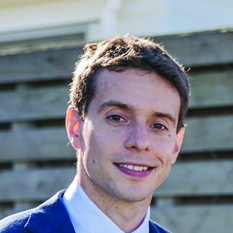
Dr. Vedran Jovic
View More

Dr. Vedran Jovic
GNS Science, New Zealand.
Dr.Vedran Jovic is currently the research and development scientist GNS Science, New Zealand. His work involves the development of materials and processes for electrocatalytic hydrogen production and conversion of C1 molecules to higher-value chemicals. His Post-Doctoral work was at the Advanced Light Source Synchrotron of the Lawrence Berkeley National Laboratory, in California, from 2014-2019. He had completed his Ph.D at the University of Auckland from 2010-2014. Furthermore, he is experienced with an extensive range of characterization techniques specifically applied to the field of materials science and chemistry and broader disciplines. He has published more than 26 publications in international journals.
Title: Dirac nodal lines and flat-band surface state in the functional oxide RuO2
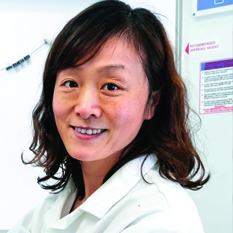
Dr. Vivian Fang
View More

Dr. Vivian Fang
GNS Science, National Isotope Centre, New Zealand
Dr Vivian Fang worked as an Associate Professor at Shanghai Jiaotong University prior to joining GNS Science in 2007. She is a senior scientist at GNS Science with research interests focusing on the understanding of the evolution of advanced, smart and nano-scaled materials. Including the understanding of fundamental properties of these materials through detailed correlating their fabrication and demonstrated properties with their morphological, structural and chemical characteristics. She is also interested in the formation of high-performance functional materials and their advanced applications particular in the fields of energy and environmental protection.
Title: 'Dry' plasma syntheses of metal oxide nanostructures and their applications
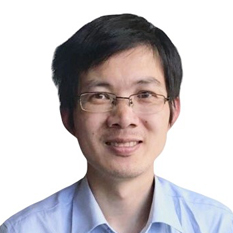
Dr. Weiping Wu
View More

Dr. Weiping Wu
City, University of London, United Kingdom
Dr Weiping Wu is the George Daniels Lecturer in the Electrical and Electronic Department, City, University of London. Dr Weiping Wu is researcher and innovator with background of electric engineering, chemistry and material science. He has published more than 40 papers with total citations over 3000 and an h-index of 29. From 2010 to 2013, he has been working at University of Cambridge on graphene and 2D materials, funded by the European Research Council (ERC) and the EU FET Graphene Flagship project. From 2013 to 2015, he has been working as a Research Fellow on nano photonics and metamaterials, funded by EPSRC in the Optoelectronics Research Centre (ORC), University of Southampton. Dr Wu is the Chairman of Chinese UK group Society of Chemical Industry (SCI), he is the members of RSC, IEEE, MRS, OSA and SPIE.
Title: Printable functional materials for electronics, photonics and energy applications
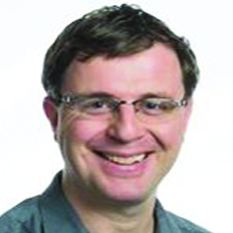
Dr. Xavier Crispin
View More

Dr. Xavier Crispin
Linkoping University, Sweden
Xavier Crispin graduated in Chemistry in 2000 at the University of Mons, Belgium under the supervision of Prof. J.L Brédas. His thesis was entitled “Grafting of vinylic polymers on transition metal surfaces: Theoretical modelling via Density Functional Theory methods”. He received an individual Marie-Curie Fellowship to join Linköping Universitet as postdoctoral fellow with Prof. W.R. Salaneck. He has been trained to become a spectroscopist using various techniques (XPS, ARUPS, NEXAFS) to characterize molecular order and electronic structure of semi(conducting) polymers and molecules, as well as the energetics at interfaces created between those materials and electrodes. In 2004, he became Associate Professor in the group of Prof. M. Berggren in Norrköping Campus, Linköping University. He worked on various organic electronics devices and developed courses in molecular physics and organic electronics. In 2011, Xavier was awarded the Tage Erlander’s prize from the Swedish Royal Academy of Science for his demonstration that conducting polymers can be thermoelectric materials. In 2011, his research got funded by the European Research Council under the ERC-starting grant program. In 2014, he became a Professor in the laboratory of Organic Electronics. His research interest is focused on the use of conducting polymers as energy materials in supercapacitors, thermoelectrics, fuel cells. Xavier received Göran Gustafsson Prize 2016.
Title: Thermoelectric polymers based sensors